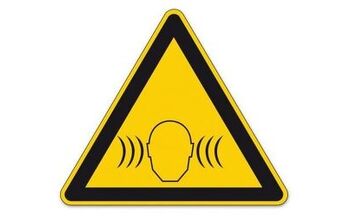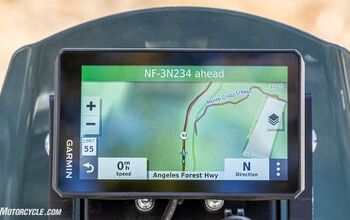Lithium Motorcycle Battery Buyer's Guide

More than just a black box under your motorcycle
For ages, we didn’t think much about the batteries in our motorcycles. When you only have one option, the traditional lead-acid battery, there’s not a lot to think about. As long as it cranks the starter over and fires up the bike, you’re good. If not, time to shell out for a new one. But like all components on a motorcycle, eventually, new technology emerges to improve the breed. The battery is no different. With the emergence of the lithium motorcycle battery the consumer now has more options.
To the average consumer, a battery is a battery. What separates one from the other? For starters, the internal chemistry is very different between the two, but for the purposes of this guide, we’ll stick to the practical differences. Generally speaking, lithium’s biggest advantage is its drastically reduced weight and physically smaller size compared to lead-acid. Lithium also has a significantly lower discharge rate – the amount of charge lost simply sitting – compared to lead-acid, faster recharge rate, more cranking amps (compared to a similar lead-acid application), and safer handling due to its internal chemistry not featuring lead and, yes, you guessed it… acid. The tradeoff, of course, is a significantly higher price tag.
Despite this, there’s nothing wrong with lead-acid batteries, and if you’re looking for the lightest hit on your wallet to power your motorcycle, then by all means. However, if you’re looking for a performance edge and value slicing weight wherever possible, then read on as we highlight different companies in the lithium battery game. They’re listed here alphabetically, even though we normally rank products. The reasoning is simple: Batteries all essentially perform the same task, many are bike-specific, and choosing one isn’t necessarily any better than another.
Table of contents
1. Antigravity
Antigravity has become one of the most recognized names in the lithium battery world, as it has products in a wide array of industries, not just powersports. Built in the USA, Antigravity batteries feature an all-brass terminal design, can be installed in any orientation, and in the case of the AG-801 seen here, weighs only 1.5 pounds. Antigravity says its batteries can hold a charge for up to one year, provided there is no parasitic draw while the bike is off (alarms, GPS, heated grips, etc.). Because the batteries are physically smaller than comparable lead-acid types, Antigravity batteries come with adhesive-backed foam strips to fill in the gap in your battery box. The AG-801 is rated at 240 cranking amps and 9 Ah, but there are several different varieties to choose from for your specific application.
Promoted Product: Shorai LFX
Our editor had a chance to install a Shorai LFX lithium battery in his Kawasaki KLX300 for some testing and there are some very noticeable improvements over the stock lead-acid battery. The most obvious is the fact that the Shorai LFX was a whopping 3.2 pounds lighter (1.5 lbs vs 4.7 lbs). Voltage also increases from 12V to 13.3V, which means the engine cranks over quicker and starts faster.
Another advantage of the Shorai LFX is that it loses its change considerably more slowly than a lead-acid battery. This comes in handy for those of you with bikes that sit idle for weeks or months at a time, which is exactly what happens to this KLX300 during the sweltering summer months in the southwestern United States. It’s nice to know that your battery will be up to the task of starting your bike when you are ready to ride again.
The Shorai LFX also comes with a battery management system (BMS), which protects it from discharging it completely and from overheating. This means it won’t discharge to a point where it can’t be recharged again.
2. BikeMaster
You might know BikeMaster for the numerous parts, tools, and accessories it sells. Included among those is its own private label line of batteries, including lithium varieties. Backed by a two-year warranty, BikeMaster backs what I said in the intro paragraphs, claiming its batteries weigh a third of the weight of conventional batteries but still have enough power to crank even the most stubborn V-Twins. These batteries utilize cylindrical cells (as opposed to plates in other batteries) and, in the case of the DLFP-5L-BS seen here, vital stats are as follows:
Voltage: 12
Capacity: 3Ah
Dimensions: 114Lx70Wx105H
Height With Terminals: 105
Battery Weight: 1.5 pounds
Normal Amps: 1.5
Max Amps: 6
CCA (-18c ): 90
Search the BikeMaster site for the appropriate battery for your application.
3. Full Spectrum Power
The big talking point surrounding the Pulse IPT battery is the IPT Reset feature. Basically, if you somehow leave something on while the bike is turned off – like your lights or heated grips, for example, the battery’s internal circuitry can recognize the parasitic drain and will initiate a power cut off before it’s drained below 12 volts. This way the battery still has enough power to start your motorcycle again. In essence, this eliminates the need for a jump start and means you won’t be stranded. Pulse IPT batteries come in all shapes and sizes to fit several different applications, and all have the following features (from the Full Spectrum Power website):
* IPT Battery Management System (BMS) – Every Pulse IPT battery comes with an integrated BMS which controls the function and behavior of the battery. This means better performance, longer life, and emergency start capability.
* IPT Reset – Intelligent Pulse Technology does two things:
1. Leave the key in the “on” position for a few months? Press the IPT Reset button, and you will be able to start your bike. You will need to recharge your battery by either riding the bike, or putting it on a charger- but there will be enough power to start your bike once.
2. It will prevent the battery from being drained, and damaged beyond repair. Lithium batteries can be damaged beyond repair if they are drained below 12 volts. The IPT will prevent this from happening.
* Universal Charger Capability – Most commercially available battery chargers work with the Pulse IPT batteries.
*Advanced Case Design- Lighter and stronger than our previous case, it rejects heat, vibration, gas and oil.
*Advanced Cell Design- We designed the Pulse IPT cells to cope with the demands of motorsports. Every component of our cells were designed and optimized for motorsports, based on a decade of experience building engine start batteries. These are only available from Full Spectrum Power.
* V Direct Multi Terminal – Our solid copper terminals have 4 threaded mount holes. Attach your accessory wires without having to use long screws on one small terminal.
* V Sleeve Silicon Terminal Covers – Color coded for polarity, our silicon terminal covers protect against short circuits.
4. Western Power Sports
Western Power Sports is better known as a distributor for many of the powersports products we know and love, but did you know the company also has a line of private label lithium batteries, too? As you can see in the image above, the batteries are called Featherweight, and with a name like that it better deliver. WPS says its 6.2 in. x 2.8 in. x 4.6 in. battery comes in at 1.7 lb. But what makes the WPS battery different from the rest is its on-board LED test gauge that will indicate the battery’s charge at the push of a button. It’s not quite as helpful as, say, the Pulse IPT battery that will leave enough juice for you to start your motorcycle, but it’s still a nice feature.
What is the best lithium battery for a motorcycle?
The short answer? Whatever one fits. They all put out 12v and perform essentially the same function. We noted this in the beginning of this piece, but the battery that suits your needs and budget is the one you should put in your motorcycle. There are no performance advantages to be found, other than weight savings compared to a standard lead-acid battery.
How good are lithium motorcycle batteries?
For every meaningful metric, a lithium battery is superior to its lead-acid counterpart. They are lighter, smaller, have a slower discharge rate (meaning they last longer), and are better suited for cold climates. Yes, they do cost more than lead-acid batteries, but if you ask us the tradeoff is definitely worth it.
Do lithium-ion motorcycle batteries need a special charger?
Yes. Because of a lithium-ion battery’s unique chemical makeup, you can’t simply use the same battery charger you’ve had around the shop for ages. Thankfully there are several options when it comes to battery charger, many of them with the ability to trickle charge multiple different varieties of batteries.
Recent Updates: Products updated and/or replaced, FAQ added, additional resources and recent updates added.
Additional Resources
MO Tested: Shorai LFX Lithium-Iron Battery Update
Lead-Acid Batteries Still Have It
Lithium Motorcycle Batteries: Myths VS Realities – Updated
Ask MO Anything: How Long Will A Lithium-Ion Battery Last?
We are committed to finding, researching, and recommending the best products. We earn commissions from purchases you make using the retail links in our product reviews. Learn more about how this works.

Troy's been riding motorcycles and writing about them since 2006, getting his start at Rider Magazine. From there, he moved to Sport Rider Magazine before finally landing at Motorcycle.com in 2011. A lifelong gearhead who didn't fully immerse himself in motorcycles until his teenage years, Troy's interests have always been in technology, performance, and going fast. Naturally, racing was the perfect avenue to combine all three. Troy has been racing nearly as long as he's been riding and has competed at the AMA national level. He's also won multiple club races throughout the country, culminating in a Utah Sport Bike Association championship in 2011. He has been invited as a guest instructor for the Yamaha Champions Riding School, and when he's not out riding, he's either wrenching on bikes or watching MotoGP.
More by Troy Siahaan

































Comments
Join the conversation
one problem I've found with most M/c batteries is the connection of power cables. I added heated grips and extra power outlet for gps and it was difficult to connect to the battery terminals.
I never had to think about my lead acid battery in my motorcycles or cars simply because they last (9 and 16 years respectively) and I've never been stranded. I know batteries and worked in a defense battery lab. I can't believe how gullible consumers are to believe all the false advertizing listed by lithium battery manufacturers.